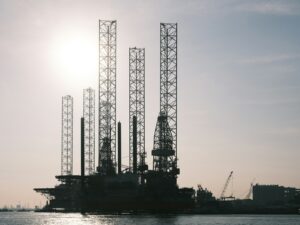RAG, AI, energy demand forecasting, and net zero compliance
Retrieval Augmented Generation (RAG) can support net zero objectives by streamlining compliance, energy demand forecasting and energy usage methodologies.
For the UK government to reach its target of net zero emissions by 2050, organisations operating in the energy sector will need to employ an array of methods to improve efficiency, which includes adopting emerging technologies to bolster performance.
Retrieval Augmented Generation (RAG) has come to the fore as an AI-driven solution that energy companies can leverage, to make processes across the board more intelligent and intuitive. This technology blends the retrieval of relevant information with the generation of insightful responses, sifting through mountains of data to find exactly what is needed and then providing recommendations or creating reports based on that data.
RAG is an accessible gateway into wider AI deployment for companies in the energy sector, enhancing decision-making processes, from market analysis to regulatory compliance and predictive maintenance. In the rapidly evolving energy sector, staying ahead of the curve is not just an advantage; it’s a necessity. Energy companies are constantly on the lookout for solutions to optimise operations, reduce costs and make data-driven decisions.
Innovations such as RAG have reached a level of maturity where they’re ready to be rolled out on a wide scale. RAG can sift through endless reports, historical market data and forecast models to help companies understand the future of energy prices. This information can then be used to make smarter buying and selling decisions, potentially saving millions in the marketplace.
Another area where RAG can support is compliance. The energy sector is heavily regulated, with policies that change frequently. RAG can navigate the latest regulations, compliance laws and policies, ensuring that companies avoid fines and penalties while maintaining safe and lawful operations.
Typically, the energy sector is capital-intensive: managing these resources can be the difference between success and failure. It can be a struggle to predict when machinery or equipment might fail, but RAG can analyse historical data and suggest maintenance before costly breakdowns occur. This leads to fewer disruptions and more trust in the stability of the energy supply.
Finally, RAG can generate custom energy-saving strategies by examining vast amounts of consumption data, which helps companies reduce waste, save on costs and move towards a more sustainable operation. Similar technology can be applied to predict solar power generation capability and match it with historical customer demand data, integrating weather forecasts and real-time solar irradiance data.
Net zero ambitions hinge on a multitude of factors, one of which is a willingness to innovate and seek out new technologies that can boost performance. AI integration isn’t a pipedream for energy companies; there are a host of solutions ready for deployment and capable of yielding swift and significant returns.
Łukasz Koczwara is CTO at STX Next, a global leader in IT consulting.
More on energy:
Can onshore wind green light solve England’s electricity problem?
Essar Energy Transition unveils Europe’s first 100% hydrogen power plant
North West clean energy-tech hub opens in Trafford, Greater Manchester
Image: Christopher Burns
















